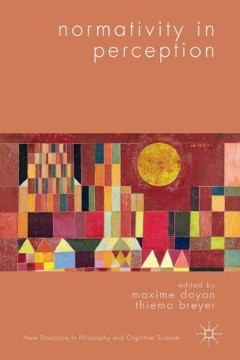Repository | Book | Chapter

(2015) Normativity in perception, Dordrecht, Springer.
How is perceptual experience possible?
the phenomenology of presence and the nature of hallucination
Matthew Ratcliffe
pp. 91-113
There is much debate over what the content of perceptual experience consists of, but let us assume that we at least perceive entities of one kind or another, regardless of whether or not perception incorporates more fine-grained classifications, such as "bus', "carving knife' or "electron microscope'. The content of perception is arguably not restricted to what we perceive, however. Something else to consider is "presence', by which I mean the sense that a perceived entity is "here, now'. In what follows, I will sketch an account of what the perceptual experience of presence consists of and then show how this account can cast light upon the nature of hallucinatory experiences. Before I get to that though, it is important to further clarify the issue. Although the term "presence' may be familiar, it is used in various different ways, and the question I address by invoking the term is seldom considered. On one interpretation, perception does not always incorporate a sense of something as "present': when I see what appears to be a person behind a tree on a dark evening, there might be a degree of uncertainty. But this concerns what is experienced as present, not the fact that some state of affairs, however indeterminate, is experienced as present. What I want to address is the sense that perceptual experience gives us access to something that is "here, now', regardless of how confident we are about what exactly it is.
Publication details
Full citation:
Ratcliffe, M. (2015)., How is perceptual experience possible?: the phenomenology of presence and the nature of hallucination, in M. Doyon & T. Breyer (eds.), Normativity in perception, Dordrecht, Springer, pp. 91-113.
This document is unfortunately not available for download at the moment.



